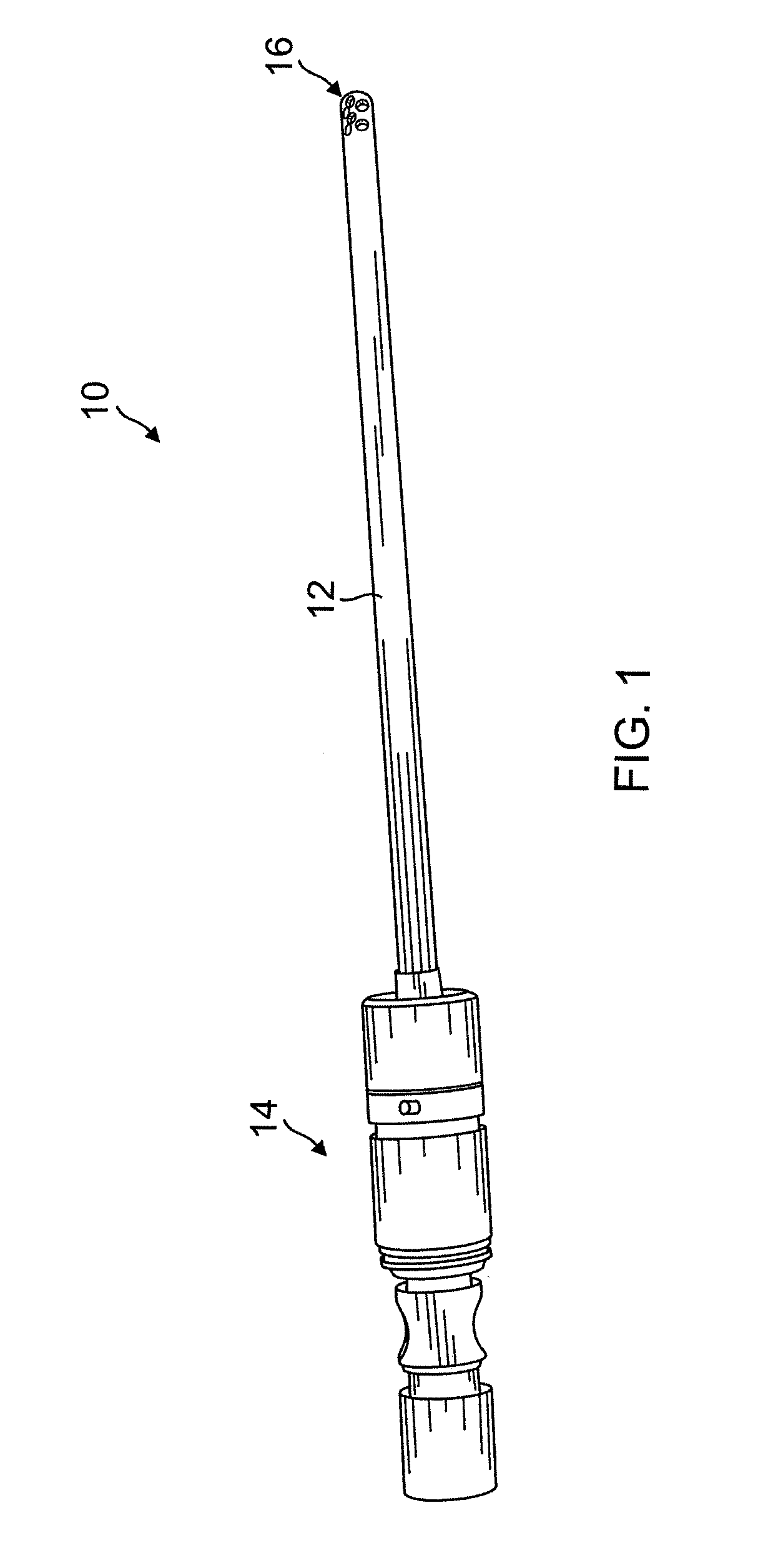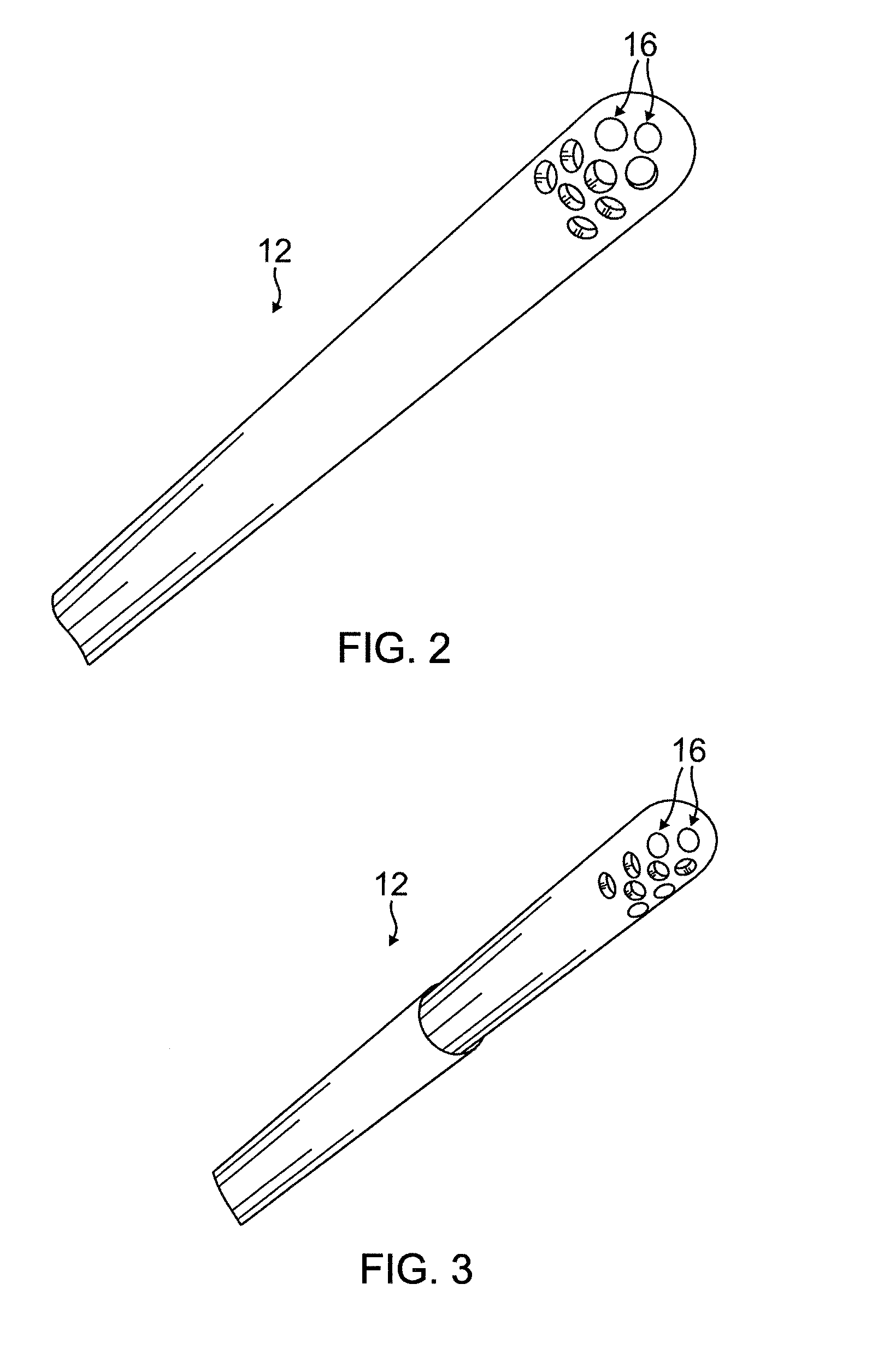Synovial villi for use with tissue engineering
a technology of tissue engineering and villi, which is applied in the field of tissue engineering methods and tools, can solve the problems of further reducing the likelihood of a synvovial hernia or leakage of synovial fluid, and achieves the effects of promoting cartilage, ligament healing, and repairing or preventing further damage to injured or diseased tissu
- Summary
- Abstract
- Description
- Claims
- Application Information
AI Technical Summary
Benefits of technology
Problems solved by technology
Method used
Image
Examples
example 1
Harvesting Synovial Villi from the Knee
[0096]As a pilot study synovial villi are removed from synovium from total knee patient. The synovium is surgically removed and placed in a Ringer's lactate bath. Synovial villi are removed from the synovium using arthroscopic equipment. The collected material is placed in the meniscal and articular cartilage explants for later use.
example 2
Storage of Cells Obtained from Harvested Synovial Villi
[0097]Samples harvested or collected from synovial villi may be frozen for later use or analysis. Fresh freezing medium is prepared by mixing 80% FCS and 20% DMSO. Cryovials are pre-chilled to −70 C in a Nalgene freezing box and cultured cells at a concentration of between 5×105 and 1×106 cells / mL are harvested with trypsin-EDTA. The cell / media material is centrifuged for 5′ at 3500 rpm. The majority of the media is removed by aspiration and the cells are chilled on ice for 1-2′. The final cell pellet is re-suspended in ice-cold freezing medium. The cell solution (0.5 mL per cryovial) is transferred into the pre-chilled cryovials in the freezing box. The freezing box containing the cryovials is placed in a −70 C freezer. Twenty four (24) hours after the cryovials are placed in the freezer, the frozen cells are transferred to liquid nitrogen for long term storage.
example 3
Meniscus Replacement
[0098]After determining that the patient is a suitable candidate for meniscus replacement, the replacement meniscus is prepared. Synovial villi are identified in a joint of the patient and are harvested. They synovial villi are morcellized and placed into a biologically compatible replacement meniscus. The replacement meniscus is made from type 1 collagen. The replacement (containing the cells) is then placed into an appropriate tissue culture medium and maintained under aseptic conditions.
[0099]The patient is prepared for surgery using typical procedures. After the anesthetic is administered and knee examined, a tourniquet is placed on the upper thigh and the thigh is secured to the table in a padded limb holder. The knee and lower leg are cleansed and draped and a diagnostic arthroscopy is performed. The instruments are inserted through three to four 1 cm incisions around the knee. One incision is for sterile saline inflow, used to improve visualization within ...
PUM
| Property | Measurement | Unit |
|---|---|---|
| Fraction | aaaaa | aaaaa |
| Meniscus | aaaaa | aaaaa |
| Biocompatibility | aaaaa | aaaaa |
Abstract
Description
Claims
Application Information
 Login to View More
Login to View More - R&D
- Intellectual Property
- Life Sciences
- Materials
- Tech Scout
- Unparalleled Data Quality
- Higher Quality Content
- 60% Fewer Hallucinations
Browse by: Latest US Patents, China's latest patents, Technical Efficacy Thesaurus, Application Domain, Technology Topic, Popular Technical Reports.
© 2025 PatSnap. All rights reserved.Legal|Privacy policy|Modern Slavery Act Transparency Statement|Sitemap|About US| Contact US: help@patsnap.com



